Inscriptions, text nos. 1-19
Browse the RIAo Corpus [http://oracc.museum.upenn.edu/riao/pager/]
Quick links
Entrance of Ninurta Temple at Nimrud (no. 5-7)
1 2 3 4 5 6 7 8 9 10 11 12 13 14 15 16 17 18 19
1 - "Annals A"
One of the longest known Assyrian royal inscriptions, this text is known as Ashurnasirpal's "Annlas," although it contains different kinds of texts, including annalistic and display texts.
It was inscribed on stone reliefs from the walls and floors of the Ninurta temple at Nimrud, and many of its part are duplicate in numerous other inscriptions.
One of the longest introductions in the corpus of Assyrian royal inscriptions opens the text (i 1-42) with a dedication to the god Ninurta, followed by the king's name, epithets and titles presented in a lengthy and elaborated narrative. Grayson reports that text no. 8 (unpublished) has the same introduction with a dedication to different gods.
After the introduction the text has the first of two parts dedicated to annalistic descriptions of military campaigns, describing the first five years of reign (i 43-ii 124 [/riao/Q004455.46/]). The following passage (ii 125-135 [/riao/Q004455.245/]) is in fact an independent display text, with parallel in text no. 31 [/riao/Q004485/], concerning the works on the Ninurta temple. It follows the second annalistic part of the inscription (iii 1-112 [/riao/Q004455.257/]) with record of the sixth to eighteenth regnal years, and then another independent display text, with a virtual duplicate in text no. 26 [/riao/Q004480/], concludes the inscription. This last portion of the inscription is divided in two parts: the first (iii 113-125 [/riao/Q004455.369/]) is an almost duplicate of the Standard Inscription (text no. 23); the second (iii 126-136 [/riao/Q004455.382/]) records the works carried out by Ashurnasripal at Nimrud.
Access the composite text [http://oracc.museum.upenn.edu/riao/Q004455/] of Ashurnasirpal II 01.
Bibliography
2 - Lion/Bull Colossus
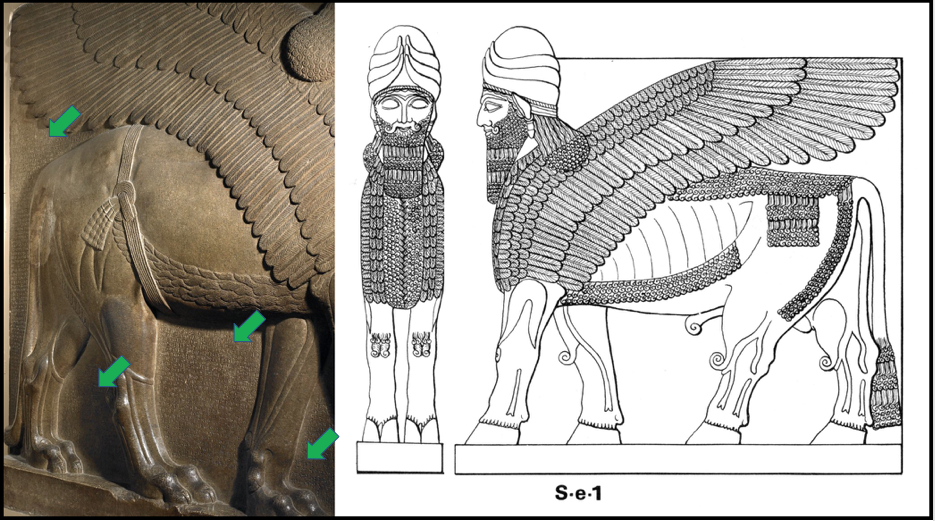
BM 118873 (ex. 2) and BM 118872 © The Trustees of the British Museum.
This annalistic text has been found engraved on several monuments. Its complete version was inscribed on a large stone slab (ND 01122), whereas other exemplars – several stone winged lion and bull colossi from Ashurnasirpal's North-West Palace at Nimrud – have the text interrupted (and presumably continuing on an adjacent object now lost, as would be typical with annals).
The inscription opens with an introduction with epithets of the king and a general description of his conquests in geographical order, which is parallel to the introduction of the Standard Inscription (text no. 23: 1-14a). After a further series of epithets the inscription continues with a record of the campaign to the Mediterranean, a description of gathering and hunting of animals, and with a record of the campaign to Carchemish (cf. text no. 1 iii 56-76 [/riao/Q004455.312/]). The final part of the inscription is dedicated to a description of the works on the city of Nimrud, in a similar fashion of the concluding part of the Standard Inscription (no. 23: 14b-22 [/riao/Q004477.14/]).
Access the composite text [http://oracc.museum.upenn.edu/riao/Q004456/] of Ashurnasirpal II 02.
Bibliography
3 - "Annals B"
A large stone slab sculpted with a figure of a genius in relief was found in one of the entrances to the Ninurta temple at Nimrud. The slab is engraved with an inscription that, after a dedication to the god Ninurta and a section with the king's name and titles (lines 1-29), records briefly Ashurnasirpal's military campaigns, with many parallels with the annalistic inscription no. 1.
Access the composite text [http://oracc.museum.upenn.edu/riao/Q004457/] of Ashurnasirpal II 03.
Bibliography
4
Various stone slabs from Nimrud were engraved with this annalistic text containing, after a dedication to the god Ninurta and the section with the king's name and titles, a brief description of Ashrunasirpal's military campaigns arranged geographically. The text continues with a section for the king's genealogy and a dedicatory passage with blessing and curses, which, in some exemplars, is followed by yet another introductory passage and an annalistic narrative. Grayson's edition – on which the present edition is based – was collated from a series of squeezes now destroyed (see Galter, Levine and Reade ARRIM 4 [1896] p. 27 [/arrim/downloads/arrim4/arrim4-3.pdf], and Grayson's commentary).
Access the composite text [http://oracc.museum.upenn.edu/riao/Q004458/] of Ashurnasirpal II 04.
Bibliography
5 - Entrance of the Ninurta temple at Nimrud
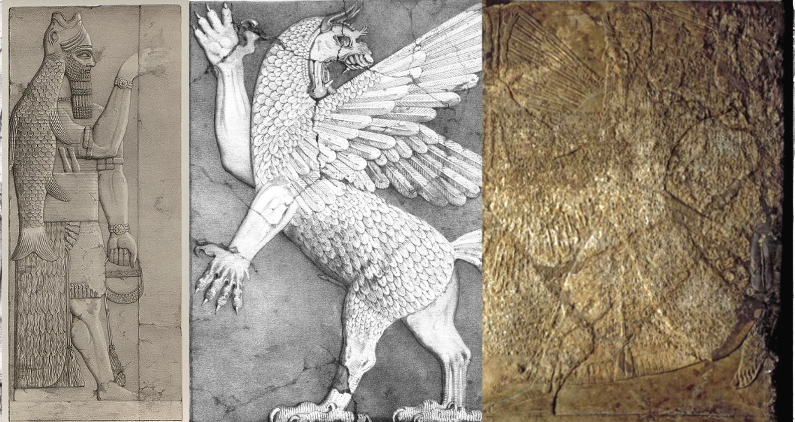
BM 124571 © The Trustees of the British Museum.
A sculpted slab from an entrance of the Ninurta temple at Nimrud is engraved with a text, which is too fragmentary to warrant an edition. Grayson suggests that it is a duplicate of text no. 3, with additional lines paralleled to text no. 1 iii 119-132 [/riao/Q004455.375/] (and beyond).
This large slab was found together with other three stone monuments found adjacent to one another. Some of these stone had an inscription engraved on the back, which is here edited as text no. 31 [/riao/Q004485/].
Bibliography
6
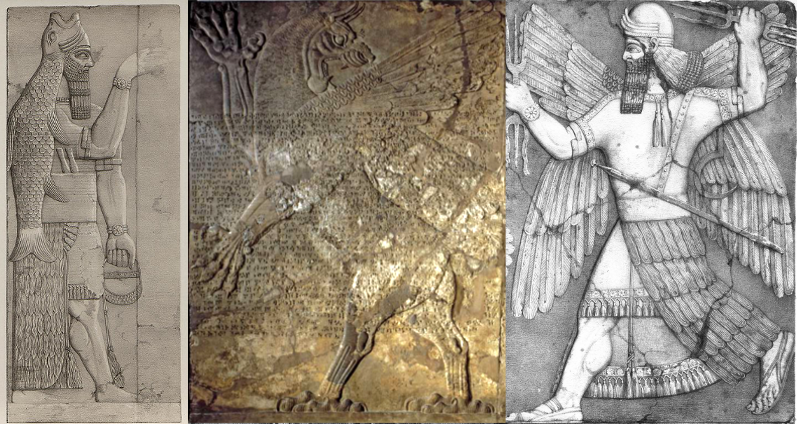
BM 124572 © The Trustees of the British Museum.
A sculptured slab found adjacent to the slab inscribed with text no. 15 is engraved with an inscription too badly worn to warrant an edition. The few readable portions look parallel to the annalistic texts nos. 3 and 5, which both have many similarities with text no. 1. Grayson notes that the similarly badly worn text no. 7 might be a duplicate of this text.
Bibliography
7
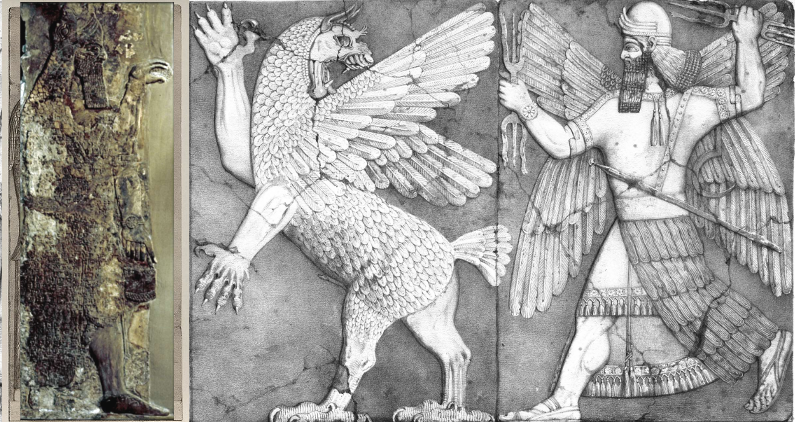
BM 124573 © The Trustees of the British Museum.
A sculptured slab from Nimrud was found adjacent to the slabs bearing texts nos. 5-6, and it isncribed with an inscription so fragemntary to prevent an edition of the text. The few readable parts seem to indicate, according to Grayson, that this inscription was a duplicate of text no. 6.
Bibliography
8
This inscription has never been published and cannot therefore appear here. It is the first part of an annalistic inscription engraved on a series of adjacent stone slabs in the North West Palace at Nimrud, which makes it a different version of the annals compared to the one displayed at the Ninurta temple of the same city and here edited as text no. 1. At the top of the slab bearing this particular inscription, which had to be the first of the series, the phrase "first tablet" is inscribed. The texts edited here as nos. 9-12 were most probably also part of the same inscription.
Bibliography
9
A stone slab for Nimrud is inscribed with a text that belongs to the series of annals from the city's North West Palace, which starts with text no. 8. The textual evidence seems to suggest that this is in fact the slab that was attached to no. 8, as the text starts right where the inscription of the latter ended abruptly. The third slab of the series was probably represented by text no. 12. The text is paralleled by text no. 1 i 57-103 [/riao/Q004455.58/], and text no. 106 [/riao/Q004560/], and to them this edition refers apart from the first two lines of texts..
Access the composite text [http://oracc.museum.upenn.edu/riao/Q004463/] of Ashurnasirpal II 09.
Bibliography
10
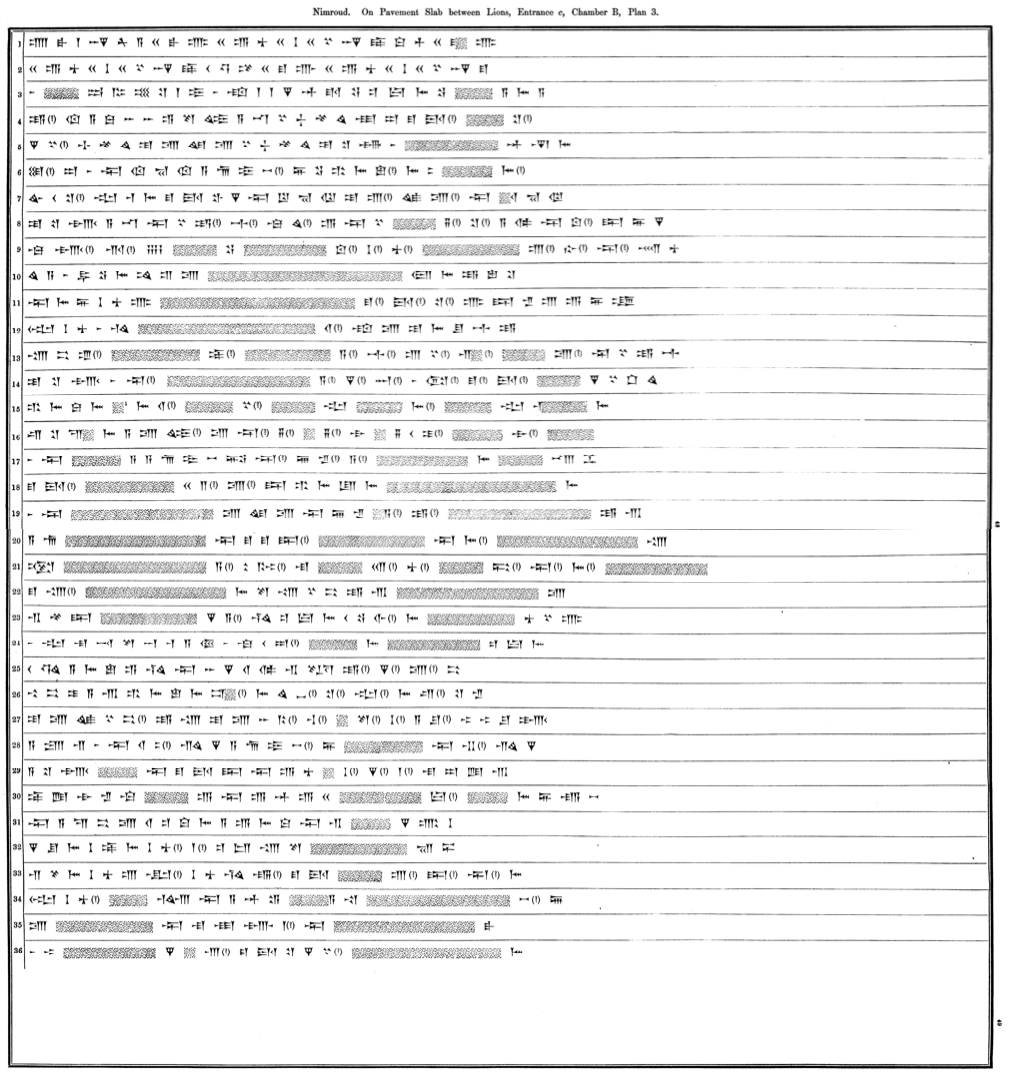
Layard, ICC pl. 48-49
An inscription found engraved on a stone slab discovered between two monumental lions at Nimrud, and known only from publications of Layard and Le Gac, might be part of the annals series of Nimrud's North West Palace edited here as texts nos. 8-12. The text is a duplicate of text no. 1 ii 86-101 [/riao/Q004455.206/] and text no. 106 [/riao/Q004560/], and to them this edition refers completely.
Bibliography
11
Also this text, which is known only from the publications of Le Gac, seems to have belonged to Nimrud's North West Palace annals series. The text is a duplicate of text no. 1 iii 63-67 [/riao/Q004455.319/], to which this edition refers completely.
Bibliography
12
This inscription has only minor variants in respect to text no. 1 ii 1-29 [/riao/Q004455.121/], of which is a duplicate, and therefore a separate edition was not made. The inscription was engraved on stone slab fragments from Nimrud and it was probably part of the North West Palace annals series, possibly the continuation of text no. 9
Bibliography
13
This fragmentary inscription is a duplicate of two passages of text no. 1: lines i 26-33 [/riao/Q004455.27/], on the obverse and lines i 52-59 [/riao/Q004455.53/], on the reverse. Since the text presents only minor variants in respect to text no. 1, a separate edition was not made. The inscriptions, found on a broken stone block was the first of a series of slabs inscribed with a version of Ashurnasirpal's annals from Nimrud.
Access the composite text [http://oracc.museum.upenn.edu/riao/Q004467/] of Ashurnasirpal II 13.
Bibliography
14
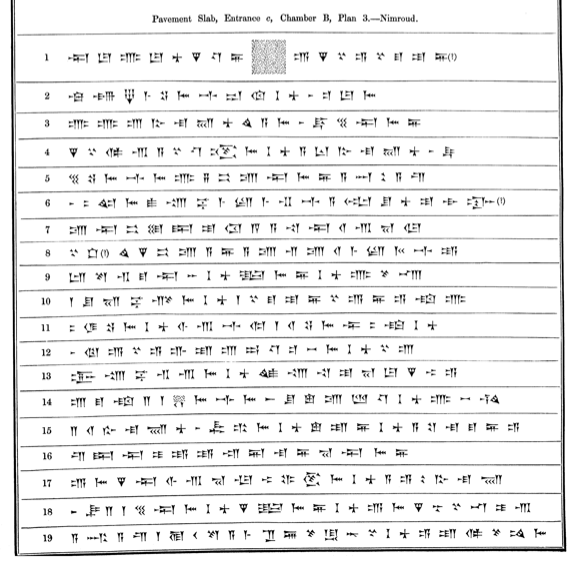
Layard, ICC pl. 84
The fragment of a stone slab from Nimrud is engraved with an inscriptions that is a continuation of the annals series. The preserved portion of text is a duplicate of text no. 1 ii 110-117 [/riao/Q004455.230/], which presents only minor variants, and therefore an edition of this text was not made.
Bibliography
15
A number of stone slab fragments from Nimrud is inscribed with this fragmentary text that belongs to one of the series of Ashurnasirpal's annls. The text survived is a duplicate of four passage of text no. 1: i 59-60 [/riao/Q004455.60/], ii 90-91 [/riao/Q004455.210/], ii 126-132 [/riao/Q004455.246/] and iii 123-128 [/riao/Q004455.379/]. Since the text has only minor variants in respedt to text no. 1, no edition was made here.
Bibliography
16
A fragmentary text with remains of an annals series possibly from Ashur. This text was mentioned by Borger, EAK 1, p. 73 (cf. Grayson, ARI 2 p. 115 n. 468 c i).
Bibliography
17 - "Nimrud Monolith"
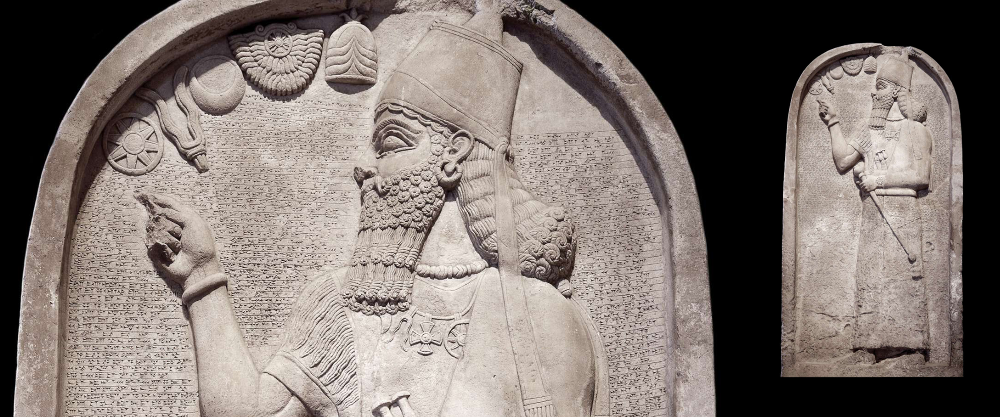
BM 118805 © The Trustees of the British Museum.
Alarge stone stele, about three meters high, often called "Nimrud
Monolith" or "Great Monolith" was discovered by Layard at the entrance
to the Ninurta temple at Nimrud. It depict the ruler carved in relief
on its obverse, while all sides of the stele are engraved with the
text edited here (see photo).
After an invocation of various dieties in the introduction, which
duplicates the introduction of text no. 8, and Ashurnasirpal's name and titles, the inscription has a long
annalistic pasage recording the king's first five campaigns, and which
is a duplicate of text no. 1 i 18b-ii 125a [/riao/Q004455.19/]. This part is
followed (v 1-24) by a description of the building works at Nimrud,
and by a long and complex concludig part dedicated to elaborated
curses. Notable is a surprising number of scribal errors, especially
in the last column of the inscription (see RIMA 2, pp. 252-254,
especially), which seems to suggest that the
chiseller was working hastily to meet a deadline.
Access the composite text [http://oracc.museum.upenn.edu/riao/Q004471/] of Ashurnasirpal II 17.
Bibliography
18 - "White Obelisk"
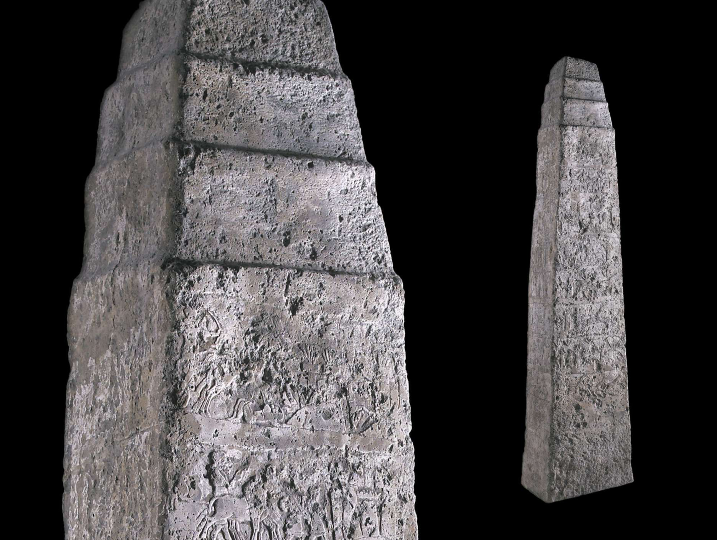
BM 118807 © The Trustees of the British Museum.
The so-called "White Obelisk" was discovered by Rassam at Nineveh
and it is a ca. three meters high obelisk of whitish stone engraved
with images in reliefs divided in registers and inscribed with a very
fragmentary and unfinished inscription. The attribution of this text
is til debated, being atributed either to Ashurnasirpal II
(Sollberger, Grayson, present edition), Ashurnasirpal I (Reade) or to
a not better precised ruler between Ashur-bel-kala and Ashurnasirpal
II (Von Soden).
The beginning of the text is missing, and the first preserved portion
records military campaigns in the area of Mount Kašiyari.
Access the composite text [http://oracc.museum.upenn.edu/riao/Q004472/] of Ashurnasirpal II 18.
Bibliography
19 - "Kurkh Monolith"
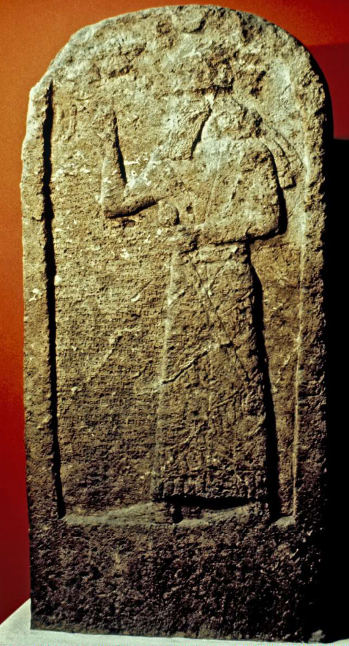
BM 118883 © The Trustees of the British Museum.
A stone stele (ca. 112 cm high) commonly called "Kurkh Monolith" was discovered in
the city of Kurkh (Üçtepe) in the Turkish province of Dyarbakir in
1861 together with another similar (but much bigger) one belonged to Ashurnasirpal's son
Shalmaneser III (text no. 2). The
stele, which is badly worn, is inscribed with text on both sides of
the monument and carved in relief on the obverse with an image of the
king.
After an invocation of various dieties, royal name and epithets, the
text records the ruler's campaigns from first to fithth year of reign.
Access the composite text [http://oracc.museum.upenn.edu/riao/Q004473/] of Ashurnasirpal II 19.
Bibliography
Nathan Morello
Nathan Morello, 'Inscriptions, text nos. 1-19', The Royal Inscriptions of Assyria online (RIAo) Project, The RIAo Project, a sub-project of MOCCI, 2020 [http://oracc.museum.upenn.edu/riao/theassyrianempire883745bc/ashurnasirpalii/texts119/]